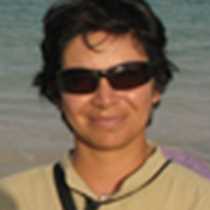Today we enjoyed our last day of our expedition in Galápagos on Genovesa Island. This island is the home of several species of sea birds and is also an extinct volcano. National Geographic Endeavour II anchored inside a caldera, which is called Darwin bay, and it was named after this very famous naturalist.
We spent all day exploring two different sites: Prince Phillip steps and Darwin Bay. On both sites we looked for Nazca boobies and red footed boobies; there were several of these birds nesting along the trails and in the case of the red footed boobies, we observed several adults and juveniles on the trees.
One of the main species to be seen on Genovesa Island was the great frigatebird, this time of the year this species is nesting. The males inflate their gular sac to a big, bright red balloon that is used to get the female’s attention. We noticed, several males making a lot of noise while beating their wings as soon as they saw a potential partner flying nearby.
At Prince Phillip steps and after a steep climb to the upper most part of the island, we explored the lava flow as well as the Palo Santo forest and after a careful observation, some of our guests found the top predator of this island, the short-eared owl. During the morning as well as in the afternoon we observed this predator hunting for small birds such as finches, mockingbirds, and storm petrels. This owl has the same colour as the rusty rocks so their camouflage keeps them well hidden from their pray.
During the morning we also went snorkelling, kayaking and paddle boarding along the cliffs of this bay, it was a great opportunity to have some time to observe and absorb the landscape and the sounds of all the birds around us.
This evening we gathered together for a last farewell toast and to share the memories of this week.







